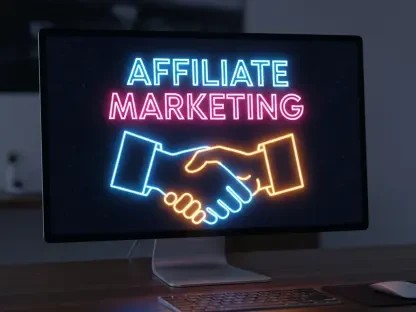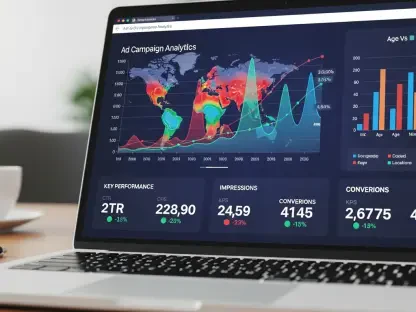In 2025, the realm of programmatic advertising is poised for a significant transformation driven by advancements in supply-side curation. This technology, focused on optimizing ad impressions and leveraging data signals, holds the promise of enhancing advertising outcomes substantially. By targeting ad impressions more effectively, supply-side curation aims to benefit all stakeholders in the digital ad supply chain.
The Evolution of Supply-Side Curation
Horizontal vs. Vertical Curation Approaches
Supply-side curation in programmatic advertising can be broadly categorized into horizontal and vertical approaches. Horizontal curation involves broad-based, cross-publisher strategies that utilize data signals to optimize ad placements across a wide range of sites. This approach offers the advantage of reaching a diverse audience, thereby increasing the potential for ad impressions and enhancing overall campaign performance.
In contrast, vertical curation focuses on specific niches or types of content. By narrowing down the target audience to particular segments, vertical curation improves relevancy and user engagement. For instance, a vertical curation strategy for a luxury automotive brand might concentrate on premium lifestyle and high-end technology sites. This targeted approach ensures that ads reach users who are more likely to have an interest in the advertised products, thereby improving conversion rates and maximizing return on investment.
Integration of AI and ML Algorithms
The integration of artificial intelligence (AI) and machine learning (ML) algorithms in supply-side curation represents a quantum leap in the efficiency and effectiveness of programmatic advertising. These advanced technologies allow for the real-time optimization of ad placements, ensuring that the most suitable ads are displayed to the right users at the optimal times. AI and ML can analyze vast amounts of data quickly, identifying patterns and trends that humans might overlook.
By deploying AI and ML, advertisers can reduce the occurrence of low-quality ad placements, thereby saving costs and increasing the overall quality of ad impressions. These algorithms can also adapt to changing user behavior and market conditions, continually refining ad strategies to maintain high performance. This dynamic optimization capability is crucial in a rapidly evolving digital landscape, where user preferences and technology trends are constantly shifting.
Enhancing Media Quality and Attention
Curating High-Quality Media
One of the standout benefits of supply-side curation is its ability to enrich media quality and capture user attention effectively. Advanced curation tools can meticulously select high-quality media content, ensuring that ads are displayed alongside relevant and engaging material. This alignment significantly boosts the chances of user interaction with the ad content, as users are more likely to engage with ads that are contextually relevant and enhance their browsing experience.
Moreover, the ability to access consented audiences at scale is a game-changer for digital advertising. By ensuring that user data is used ethically and in compliance with privacy regulations, supply-side curation fosters trust and transparency. This ethical approach not only aligns with evolving data privacy standards but also enhances the credibility and effectiveness of advertising campaigns, leading to better engagement and conversion metrics.
Adoption by Media Agencies and Brands
The growing adoption of supply-side curation tools by media agencies, demand-side platforms (DSPs), and brands underscores the technology’s potential and effectiveness. Media agencies and brands are increasingly recognizing the value of these tools in streamlining their advertising efforts and improving performance metrics. By leveraging smart curation technology, they can achieve higher precision in targeting, optimize budget allocation, and enhance the overall impact of their advertisements.
Brands benefit from increased engagement and higher return on advertising spend, while media agencies can offer more effective solutions to their clients. This adoption trend reflects a broader shift in the industry towards data-driven, algorithmic approaches to advertising, moving away from traditional, manual methods that often lack efficiency and scalability.
Addressing Signal Loss and Inefficiency
Mitigating Demand-Side Signal Loss
One of the significant challenges in programmatic advertising is the issue of demand-side signal loss. Supply-side curation addresses this problem by utilizing advanced algorithms and data engineering techniques to capture and process more comprehensive data signals. This capability helps in understanding user behavior better and tailoring ad placements to match those behaviors more accurately.
Without effective curation, DSPs might miss numerous potential impressions due to their limited capacity to listen to the entire bidstream. Supply-side curation ensures that DSPs can process a broader array of signals, thereby increasing the chances of selecting the most relevant and high-quality impressions. This enhancement leads to more effective ad campaigns, as the ads are more likely to reach interested users and drive meaningful interactions.
Granular Optimization Controls
The ability to provide granular optimization controls is another key advantage of supply-side curation. This feature allows advertisers to fine-tune their ad strategies and align them with specific campaign key performance indicators (KPIs). By offering detailed controls over various aspects of the ad placement process, supply-side curation enables advertisers to customize their campaigns to suit diverse advertising strategies.
For instance, an advertiser aiming to drive brand awareness might prioritize high viewability rates and engagement metrics, while another focused on direct conversions might target metrics like click-through rates and return on ad spend. Supply-side curation tools provide the flexibility to adjust these parameters dynamically, ensuring that campaigns remain aligned with their objectives and can adapt to changing market conditions in real time.
Future of Programmatic Advertising
Semantic Data for Contextual Advertising
The usage of semantic data in supply-side curation is enhancing the relevance of contextual advertising. By understanding the meaning and context of web content, semantic analysis can improve the alignment between ads and the surrounding content. This approach ensures that ads are displayed in contexts that make sense, increasing the likelihood of user engagement and content monetization.
For example, an ad promoting a new fitness tracker would be more effective if displayed alongside content related to health and fitness rather than unrelated topics. Semantic data helps in identifying these relevant contexts accurately, thereby enhancing the impact of contextual advertising. As a result, advertisers can achieve higher engagement rates and improve their overall campaign performance.
Reducing Ad Waste and Enhancing Efficiency
As we move closer to 2025, the landscape of programmatic advertising is set to undergo a profound transformation, largely due to advances in supply-side curation. This particular technology centers on optimizing ad impressions and manipulating data signals to dramatically improve the results of advertising efforts. Supply-side curation promises to refine how ad impressions are targeted, aiming to deliver greater benefits to everyone involved in the digital ad supply chain.
In essence, supply-side curation involves the meticulous management and filtering of available ad inventory to ensure that each ad impression is carefully matched with the most relevant audience. By leveraging sophisticated data signals, advertisers can ensure that their ads reach the most appropriate users, enhancing engagement and conversion rates. This evolution is not only expected to bolster the efficiency of advertising campaigns but also to create a more seamless and rewarding experience for consumers. As such, it’s anticipated that all parties—from advertisers and publishers to end users—will reap significant advantages from these technological advancements.









